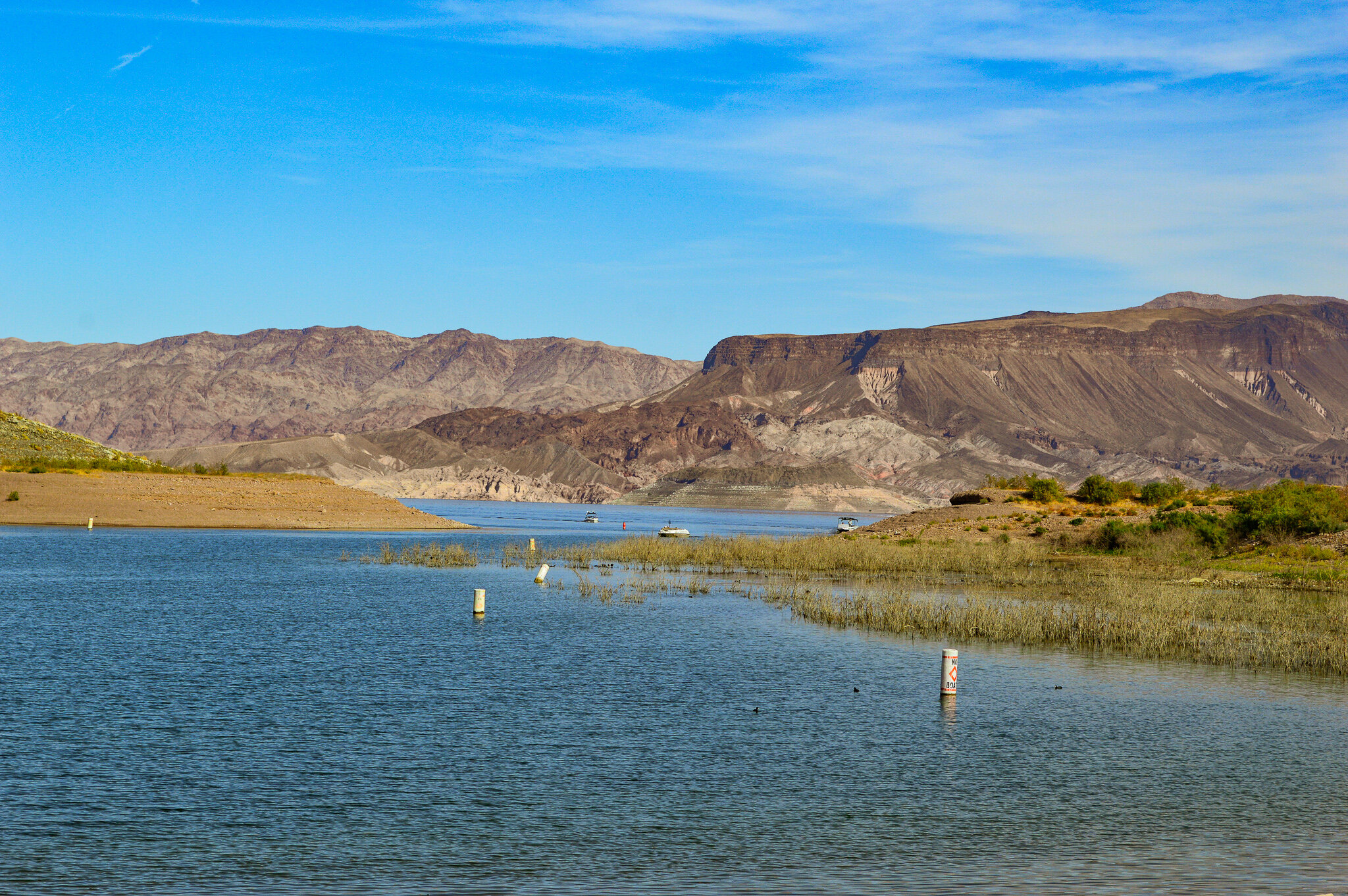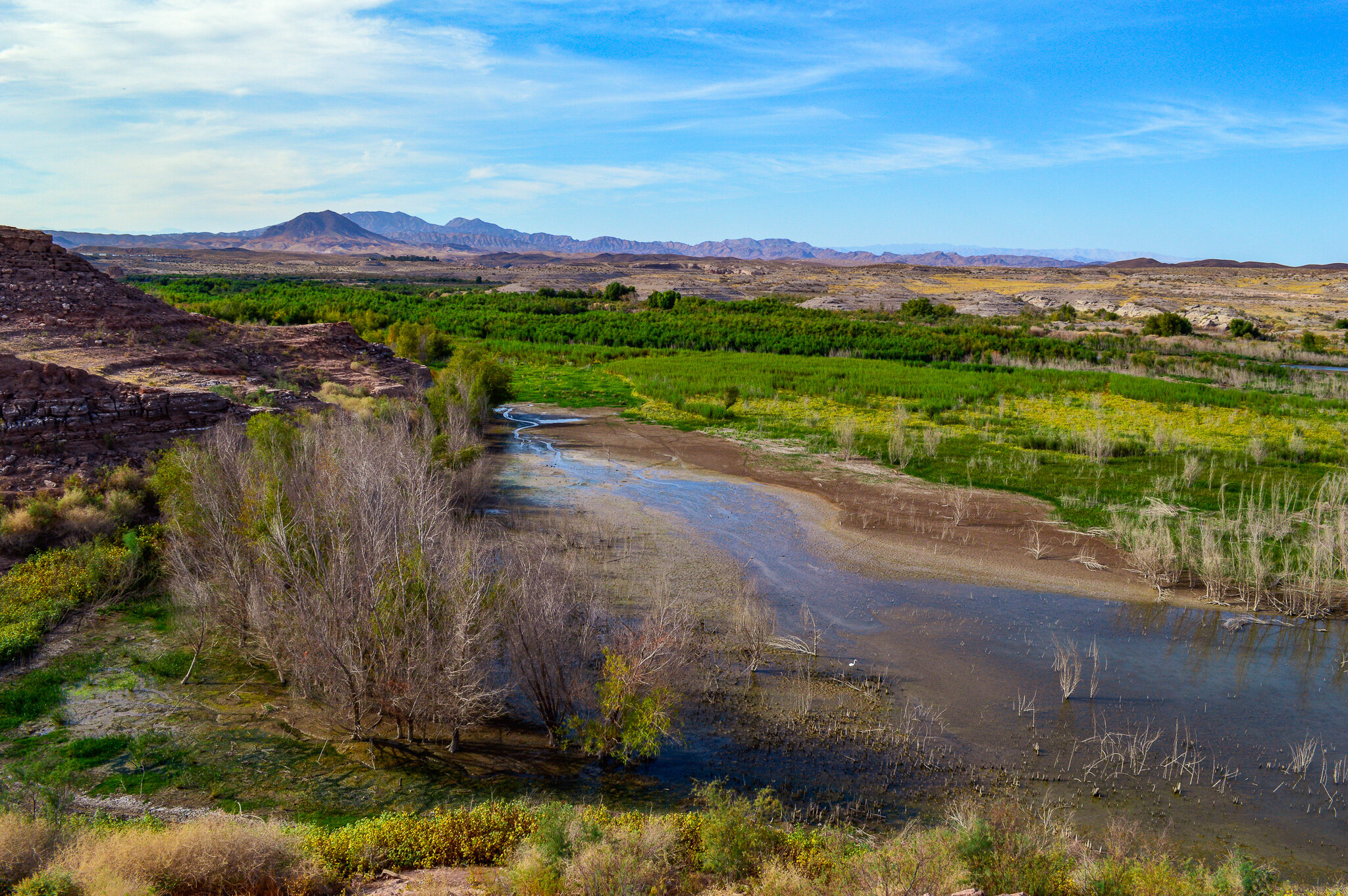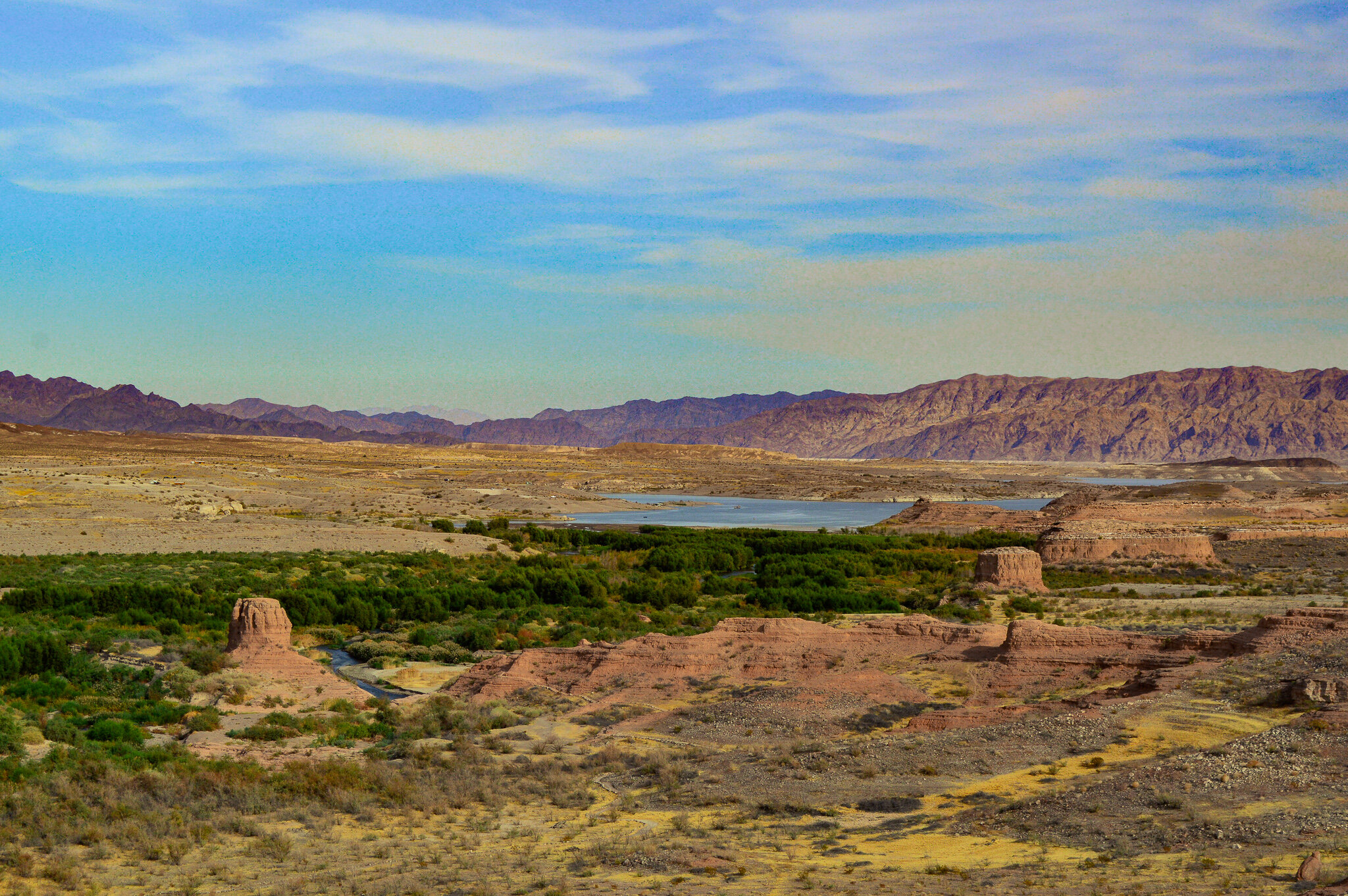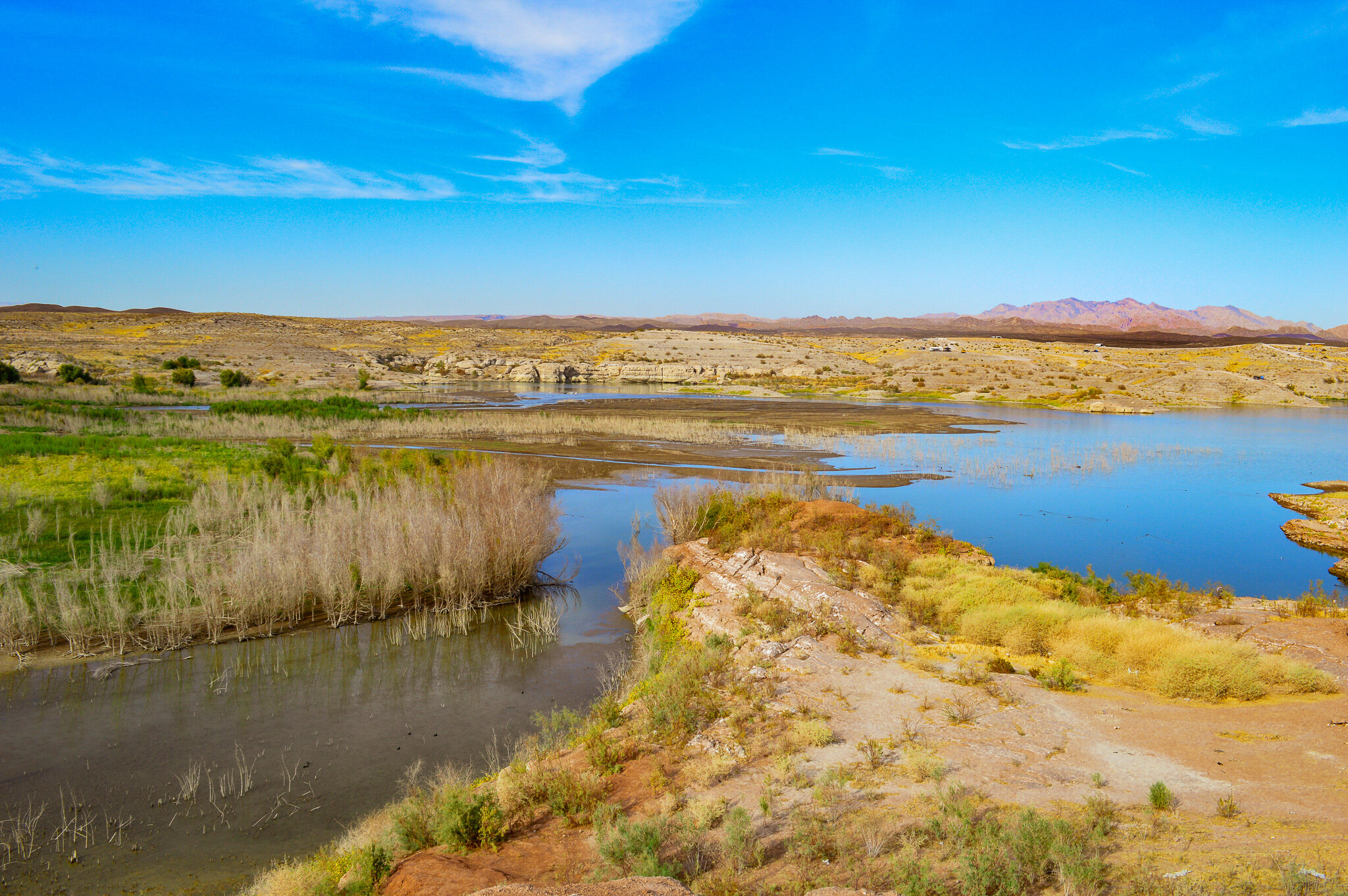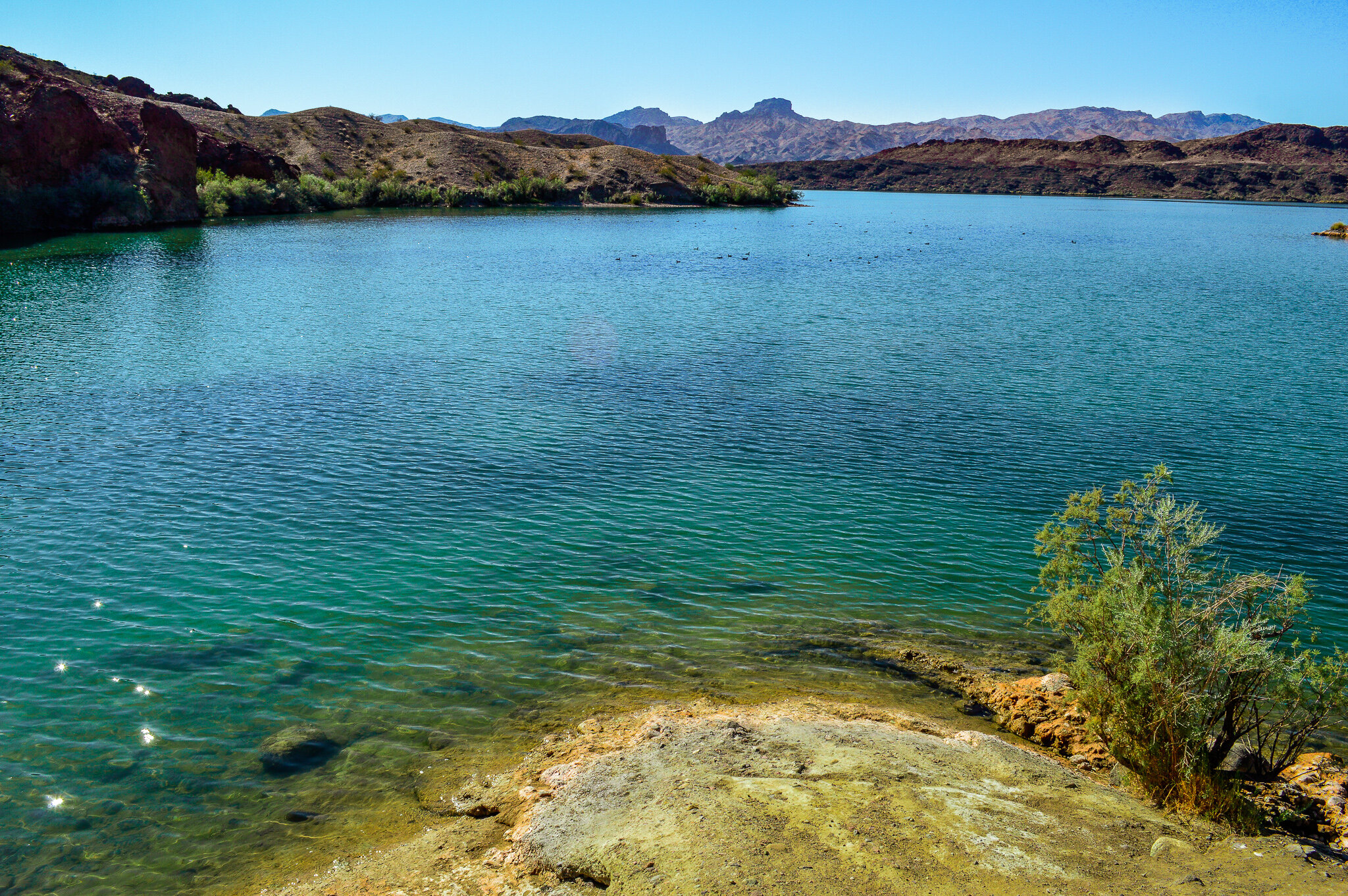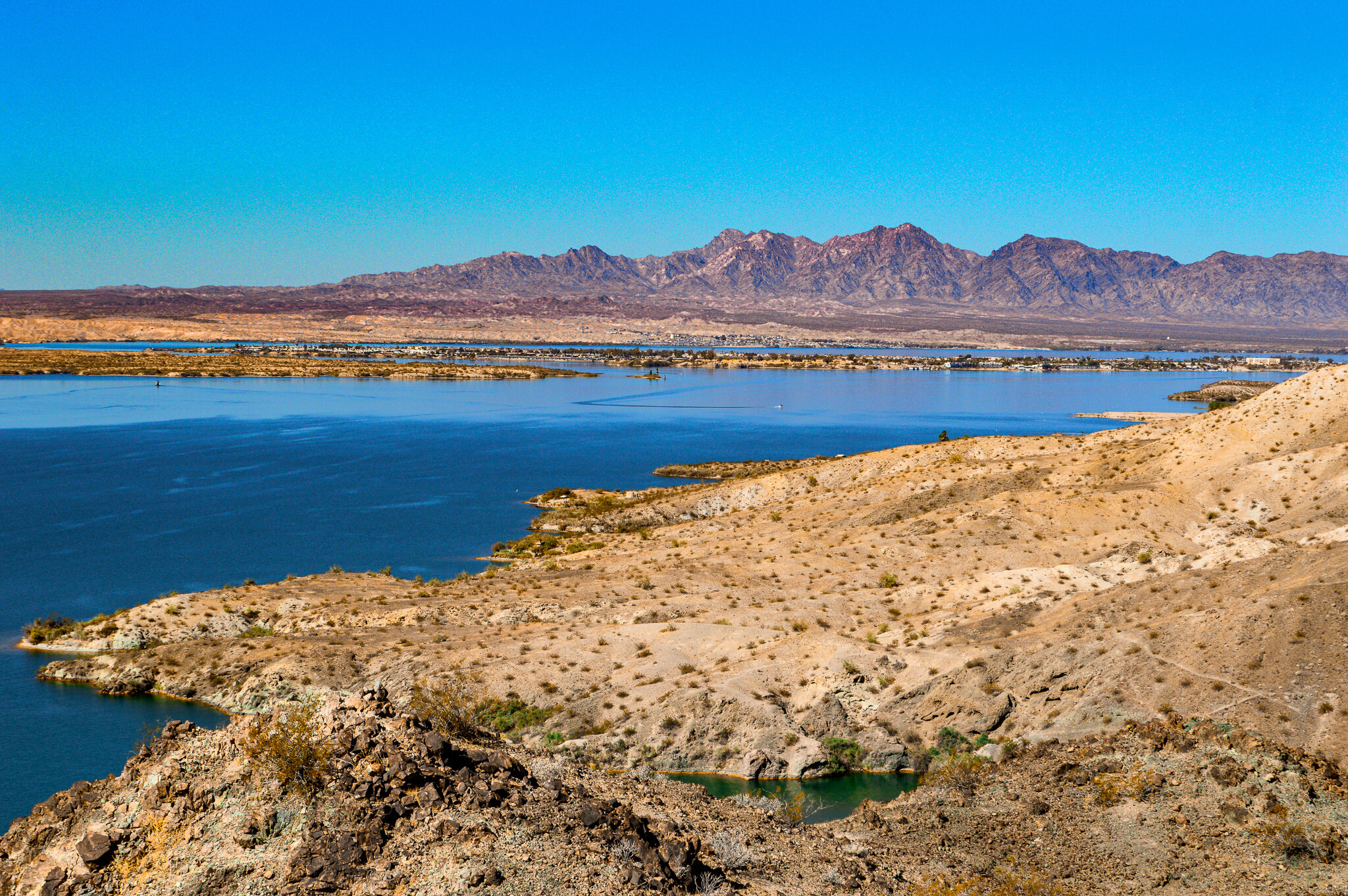Lake Mead and Lake Havasu

As we approached the end of fall and the start of winter, we were excited about the prospect of continuing our journey west with the hopes of avoiding most snow and cold temperatures. In addition to our very brief visit to Las Vegas, we also spent a few weeks at Lake Mead and Lake Havasu before crossing into California (our winter destination). Taking the “Loneliest Road” across state lines had us quite unsure what to expect from this rather sparse desert, and we were surprised at the beauty we found at both lakes. While both are known for water recreation, it was clear that drought and COVID once again made our visit a bit out of the ordinary.
Lake Mead is America's first and largest national recreation area, a fact I found rather surprising when considering there are 40 national recreation areas, located across 26 states. What started out as an after-effect of creating the Hoover Dam and consequently disturbing the natural state of the environment, Lake Mead was designated as a national recreation area in 1936 to allow for more intensive land use while maintaining the National Park Service’s role in conservation. While some may find the interoperability of different areas of the government surprising, I found the size of Lake Mead and its designation as the largest national recreation area, encompassing ~1.5 million acres, quite shocking. To put that in perspective, Grand Canyon NP is 1.2 million acres (I.e. you can see Lake Mead from space!).
The area surrounding Lake Mead is pretty non-descript dessert - dry washes, desert plains and low, rugged hills with what feels like an absence of plant life. With very few trails for hiking and exploring, and Hoover Dam being closed due to COVID, our options to experience this area felt condensed to either exploration via watercraft or taking the 12-mile scenic drive. The scenic drive was just scenic enough to warrant the time in the car, with a variety of views and several attractions around the historic railroad, the (closed) Lake Mead Lodge, and the (closed) Lake Mead Fish Hatchery. The bluffs located at the end of the drive offer interesting views that highlight the effects of erosion in this area and had a bit more diversity in plant life.
With all that said, the views of the lake are becoming less and less impressive as the amount of water in the lake as decreased steadily due to drought; the reservoir is less than 40% full and the surface level has fallen by over 100 ft.
Falling surface level - the white line is where the water level used to be
This had us looking for other opportunities to appreciate the area. Not being large watercraft people, we found one of the lesser-known canyons within the recreation area to be much better suited to our Tomcat Tandem kayak and our interests – Black Canyon of the Colorado River, which we accessed via Willow Beach. Once on the water, the scenery improved dramatically - clear blue water beneath gaunt rocky cliffs, innumerable sheltered coves and flooded canyons, and empty beaches for picnics. This 30 mile stretch of the CO river has plenty of isolated spots to explore for those willing to make the trek, with our favorite being Emerald Cave – when the light hit the water just right, it turned a dark river cave into a radiant grotto of shimmering green.
Lake Havasu in contrast felt like spring break party central. While Arizona has never had a mask mandate and actually rescinded their emergency measures regarding COVID, I think we were shocked to arrive in a town that was running business as usual, as if COVID did not exist. We were clearly the odd ducklings of the group wearing masks, which was reinforced with encounters like unprompted parents yelling “masks are unnecessary” at us across the playground. I’m not here to argue with anyone on our government’s response to COVID, or the information that is issued from the CDC on how to protect yourself and others, but I can tell you that at the time of our visit the Arizona Governor still maintained the executive order requiring social distance and recommending masks. To arrive in a town that had little league games on the weekend, dine-in restaurants, and businesses open to full capacity after so many months of restrictions was....really just shocking. It felt like we had magically been transported to a pre-pandemic time, to a small tight-knit community who was actively engaging in each others lives and the community. To leave some pretty remote locations and arrive in a city that just felt so... open...was a complete 180 from what we had experienced in pretty much all of 2020. We also arrived the week of the election, with daily Trump parades and flags and banners on nearly every house and business. I really hate to be political, but this was the first and only location that was so heavily dominated by one particular political party, it’s hard not to mention. To this point on the trip, politics had never been a factor that changed the interactions we had with people. However, the proximity to the election also had folks generally on edge, and I would like to believe that the negative interactions we had were due mostly to general political angst. Don’t get me wrong, people were still friendly so long as they didn’t catch you with a mask on...but any hint that you might believe COVID was real was a one way ticket to rude comments, stone faces, and a general unwillingness to talk to you.
Given all of that, we mostly stuck to ourselves, found ways to get outside in what felt like a generally safe manner, and were thankful that our stay was only 2 weeks long. We highly enjoyed kayaking under the London Bridge and around the channels surrounding Lake Havasu City. The London Bridge itself was originally built in London over the Thames river and was transported block by block to Lake Havasu City as a way to attract more tourist. There is quite a bit of European history associated with this bridge, including displaying the severed heads of traitors impaled on pikes and dipped in tar to preserve them against the elements. And just in case you find that sort of history intriguing, you may find it interesting to know that William Wallace, was the first head to appear on this bridge.
Another place worth noting in this area is the Crack in the Mountain Trail, also known by locals as “SARA’s Crack”. This trail takes you through one of the most famous slot canyons on the Lower Colorado River to the shores of Lake Havasu and offers gorgeous panoramas of the lake and surrounding cities. This trail was relatively easy, outside of 7ft dry fall you must negotiate. There is a rope to help ease the climb down, but honestly it is smooth enough that we choose to slide down it – natural adult playgrounds are the best! The trails throughout this park have little to no marking, are traveled infrequently, and are interconnected throughout, so plan on getting a bit lost (ha, we sure did!). Be sure to check the weather before you go – as with all other slot canyons, flooding can make this trail dangerous.
Overall, Lake Havasu seems like a really fun time – there is lot’s of shopping, interesting history, an abundance of water sports, and a cute community living on an island that has an accessible bike path around the whole island. I think we absolutely plan to come back, but would like to be vaccinated first 😊


